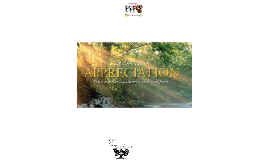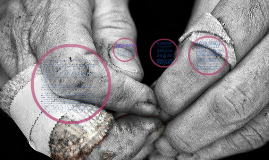Unit 7 Music Appreciation Powerpoint
Transcript: Timeline Get started with the basics of blues & jazz Jazz Age BeBop & Cool Jazz Jazz Rock fusion 1940 1960-1970 1950 Hard Bop 1990-Now Dixieland, Jazz-Rock 1930 1980 Smooth Jazz Kansas City Jazz 1920 Get to know the genre of Jazz you love best. Various types of artists continue to be influenced by both genres of music today. Blues and jazz are incorporated into the work of many artists, including Bob Dylan, Bruce Springsteen, and Stevie Wonder. Jazz became a cornerstone of American culture by the 1960s. It was in the 1940s that swing music gained popularity and influenced jazz 3 Bebop, big band jazz, and Dixieland jazz emerged as other jazz genres. 4 An improvisatory jazz style was developed in the 1940s and 50s under the name cool jazz. 7 As jazz developed, other genres of music began to be influenced by it. The genre of rap was one of them. People who had never heard jazz before began to listen to it in the 1950s 1 5 2 In the 1920s and 1930s, blues music became increasingly popular 6 A wide range of styles and sounds were explored by musicians as the genre gained popularity. As jazz developed from the blues in the 1930s, it became its own genre 8 Get into the blues and jazz mood. Jazz that is done in a marching band style is called Dixieland style jazz, a style characterized by fast pace and use of improvised music. The trombone plays the bass note to signify the change in harmony, and it is the most important note in jazz. The drums, tubas, and banjo play a rhythm in a flat four beat with no accents. The early groups didn't use a piano. A genre of jazz that is characterized by its relaxed, mellow sound, cool jazz is also known as West Coast Jazz. It incorporates elements of technology into its sound, including synthesizers and other electronic devices. Characterized by a 12-bar chord progression; often features a call-and-response between the singer and the band Blues is a genre that has a slow, pensive and musical feel to it. The blue notes are used in the music and hence the term "blues". The notes are usually played on the third and seventh degrees of the scale and give the music its "blue" sound. Swing is a genre of jazz that is characterized by its up-tempo rhythms, catchy melodies and big band ensembles. It features a swinging rhythm and a 4/4 time signature. It often features big band ensembles, making it an adventurous genre of music. New Orleans jazz is characterized by its use of call-and-response and improvisation, as well as the use of brass instruments such as trumpets and trombones. The music is also often intense, due to its focus on collective rather than individual playing. Chicago style jazz is characterized by its use of horns, often complex arrangements, and a saxophone. Ease and relaxation in playing style gave way to tension and drive; soloists became more important than collective improvisation. King Oliver and others added to the sound of the blues. The time signature changed from 4/4 to 2/4 (accenting beats 2 and 4 rather than 1 and 3). Bebop is a genre of jazz characterized by fast tempos and improvisation-heavy chord progressions. complex harmonies,It often features solo improvisation by musicians who play with a lot of energy. Get to know the most famous musicians in the world. Blues- Willie Dixon Willie Dixon With more than 500 blues compositions, Willie Dixon was a prolific writer. After leaving Mississippi during the Great Depression and riding the rails to Chicago, he became a leading blues songwriter and producer. He wrote the songs that helped create what has been referred to as the Chicago blues sound, which were recorded by such blues artists as Muddy Waters, Howlin' Wolf, Bo Diddley, and Koko Taylor. Segregation laws at the time forced blues musicians to sit down while playing their instruments. Over pre-existing riffs, they improvised melodies and lyrics using these unique techniques. Miles Davis Cool Jazz- Miles Davis Miles Davis was one of the great trumpeters of the 20th century, and his influence on the art of jazz as a bandleader and composer is still felt today. Davis was born in Alton, Illinois, on May 26, 1926. He began playing the trumpet at the age of seven, studying under his father, who was a band director. Davis attended the University of Illinois at Urbana - Champaign, where he majored in music and played in the band. After graduating from college in 1949, Davis joined the U.S. Army and served for two years. In 1957, Davis signed with Columbia Records where he recorded several albums including "Miles Ahead" (1957), "Workin' with the Miles Davis Quintet" (1958), "Porgy and Bess" (1960), "Tone Poems" (1961), " Relaxin' with the Miles Davis Quintet" (1962), Louis Armstrong New Orleans Style- Louis Armstrong Louis Armstrong, nicknamed "Satchmo," "Pops" and, later, "Ambassador Satch," was born in New Orleans, Louisiana on August 4, 1901. Louis Armstrong was an all-star virtuoso of the trumpet who came to prominence in the 1920s, influencing countless artists

















